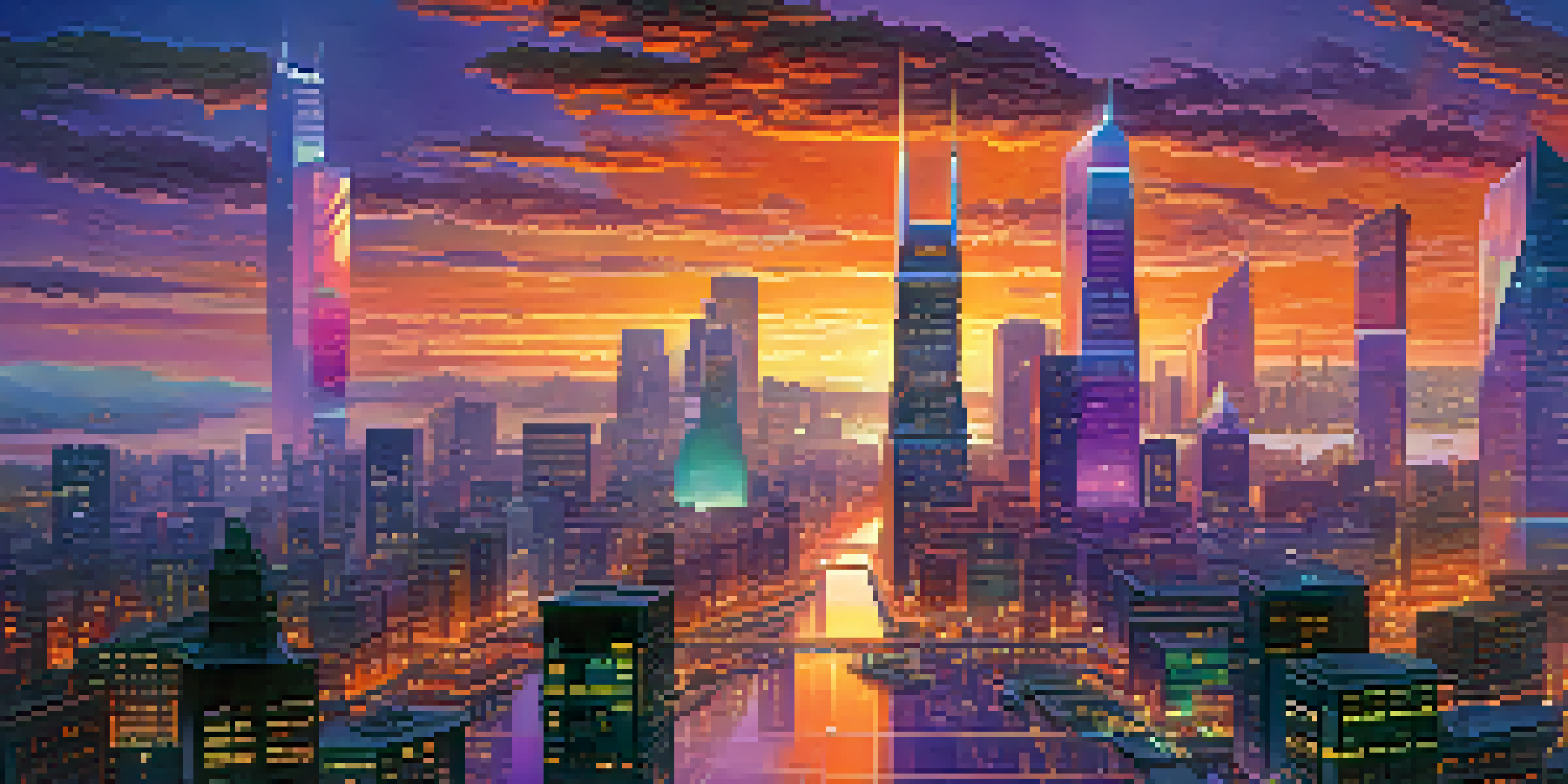The Intersection of Animation and Live Action in Storytelling

Understanding Animation and Live Action: A Brief Overview
Animation and live action are two distinct storytelling mediums that each offer unique advantages. Animation brings characters and worlds to life through artistic creativity, allowing for limitless possibilities. In contrast, live action captures real human emotions and performances, grounding stories in reality.
Animation can explain whatever the mind of man can conceive.
When combined, these two forms can create a rich tapestry of visuals and narratives. Think of how animated elements can enhance a live action scene, adding depth or humor in ways that live action alone may not achieve. This interplay can lead to more engaging and dynamic storytelling experiences.
Understanding the strengths and limitations of each medium is crucial for creators. By recognizing how animation can complement live action, storytellers can craft narratives that resonate with audiences on multiple levels.
Historical Context: The Evolution of Mixed Media in Film
The blending of animation and live action is not a new concept; it dates back to the early 20th century. Films like 'Steamboat Willie' showcased how animated characters could interact with live action environments, paving the way for future innovations. As technology advanced, filmmakers began to experiment more boldly with this combination.

One landmark film that exemplified this blend is 'Who Framed Roger Rabbit,' which seamlessly integrated animated characters into a live action world. This film not only entertained but also set a standard for how animation could enhance live storytelling. It opened the door for further explorations in the genre.
Animation and Live Action Unite
The combination of animation and live action creates rich storytelling experiences that engage audiences on multiple levels.
Today, the intersection of these mediums continues to evolve, thanks to advancements in CGI and animation techniques. Modern films like 'Space Jam: A New Legacy' demonstrate how these tools can create visually stunning narratives that captivate audiences of all ages.
The Emotional Impact of Blending Animation and Live Action
One of the most powerful aspects of combining animation with live action is its ability to evoke emotion. Animated characters can express feelings in exaggerated ways, making it easier for audiences to connect with them. This emotional resonance is often amplified when placed alongside real actors who bring authenticity to the narrative.
The best stories are those that connect with the audience, and blending animation with live action allows for a deeper emotional resonance.
For example, in films like 'The Lion King' (1994), the animated characters' struggles and triumphs are made even more poignant by the sincere performances of the voice actors. This blend creates a rich emotional landscape that draws viewers deeper into the story. The result is a multi-layered experience that leaves a lasting impression.
Ultimately, the fusion of animation and live action creates a unique storytelling dynamic that fosters connection and empathy. It allows for a broader range of expression, making it possible to tackle complex themes in a more relatable manner.
Creative Techniques: How Filmmakers Achieve the Blend
Filmmakers utilize various techniques to blend animation and live action effectively. One common method is rotoscoping, where animators trace over footage frame by frame to create realistic animated movements. This technique was famously used in films like 'A Scanner Darkly,' allowing for a seamless integration of the two styles.
Another technique is compositing, which involves layering animated elements over live action footage. This can be seen in movies like 'The Avengers,' where CGI characters like Hulk interact with real actors, creating a cohesive visual narrative. Such techniques require careful planning and execution to ensure that both elements work harmoniously.
Historical Evolution of Mixed Media
The blending of these two mediums has a rich history, with landmark films like 'Who Framed Roger Rabbit' showcasing their potential.
The creative choices filmmakers make in this blending process are crucial. By thoughtfully integrating these mediums, they can enhance storytelling and elevate the viewer's experience, making the film feel more immersive and engaging.
Case Studies: Successful Films That Embrace Both Mediums
Several films have successfully navigated the intersection of animation and live action, setting benchmarks within the industry. 'Mary Poppins' is a classic example where live action and animation coexisted beautifully, creating memorable musical sequences that are still cherished today. This film's innovative approach captivated audiences and showcased the possibilities of mixing these two forms.
More recent examples include 'Pete's Dragon' and 'The Jungle Book,' both of which blended stunning CGI with live action to create enchanting worlds. These films not only pushed the boundaries of visual effects but also told deeply resonant stories that appealed to both children and adults. Their success highlights the potential of this creative combination.
By analyzing these case studies, we can draw insights into the elements that contribute to a successful blend. It’s not just about visuals; it’s about storytelling, character development, and emotional engagement that resonate with viewers.
Challenges and Considerations in Mixed Media Storytelling
While blending animation and live action offers exciting possibilities, it also presents unique challenges. One major hurdle is maintaining visual consistency between the two mediums. If the animation feels out of place or poorly integrated, it can disrupt the viewer's immersion in the story, detracting from the overall experience.
Another consideration is the balance of narrative focus. Filmmakers must ensure that neither medium overshadows the other; both should serve the story equally. This can be tricky since animated elements might steal the spotlight, potentially leading to a disjointed narrative experience.
Future of Storytelling is Bright
Advancements in technology, such as virtual reality, promise to further enhance the integration of animation and live action in future narratives.
Ultimately, successful mixed media storytelling requires careful planning and a clear vision. Creators must navigate these challenges with creativity and intent, ensuring that their stories resonate with audiences in a meaningful way.
The Future of Animation and Live Action in Storytelling
As technology continues to advance, the future of animation and live action storytelling looks bright. Innovations in virtual reality and augmented reality are paving the way for even more immersive experiences. Imagine stepping into a story where animated characters interact with you in real time, blurring the lines between viewer and participant.
Moreover, the increasing popularity of streaming platforms is encouraging creators to experiment with this blend. Series like 'The Mandalorian' have utilized groundbreaking technology to combine live action with stunning visual effects, setting new standards for storytelling. This trend is likely to expand, offering audiences fresh narratives that push the boundaries of creativity.

As we look ahead, the intersection of animation and live action will continue to evolve. With each new project, filmmakers will explore innovative ways to engage audiences, ultimately enriching the storytelling landscape and providing exciting experiences for viewers.